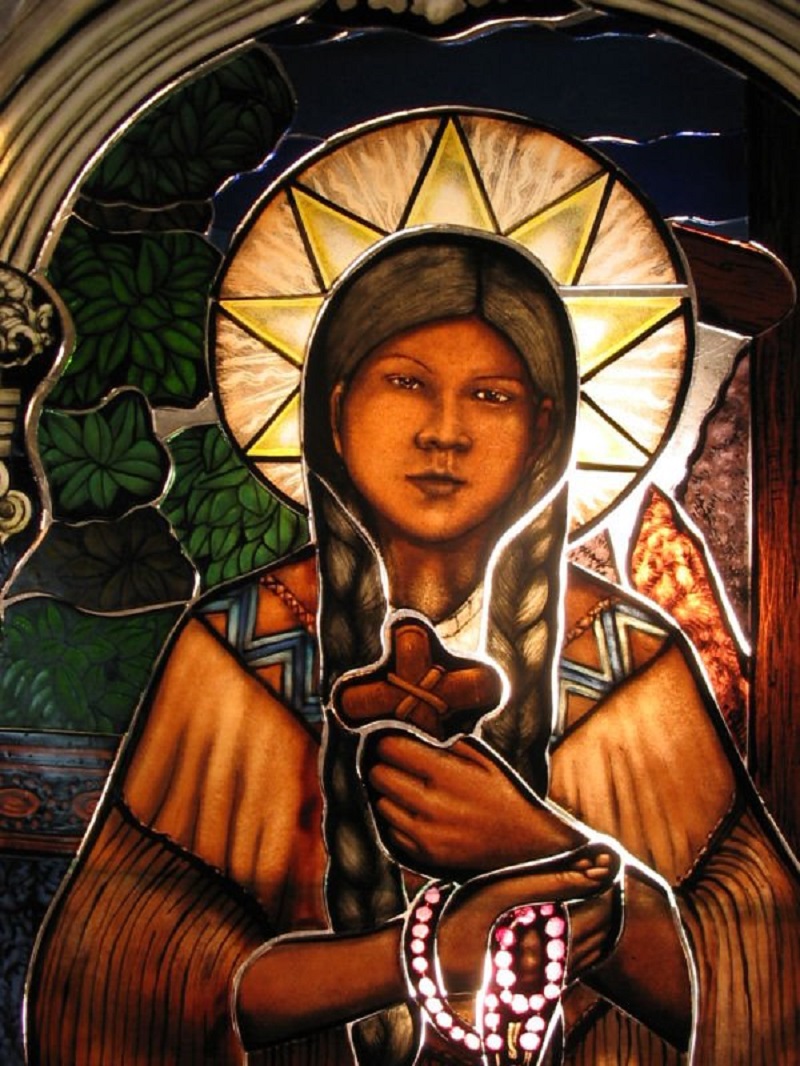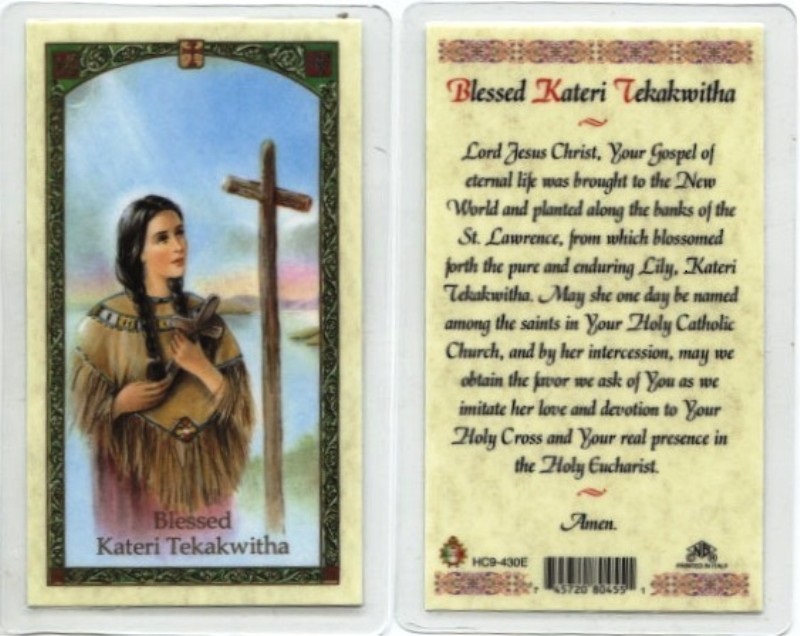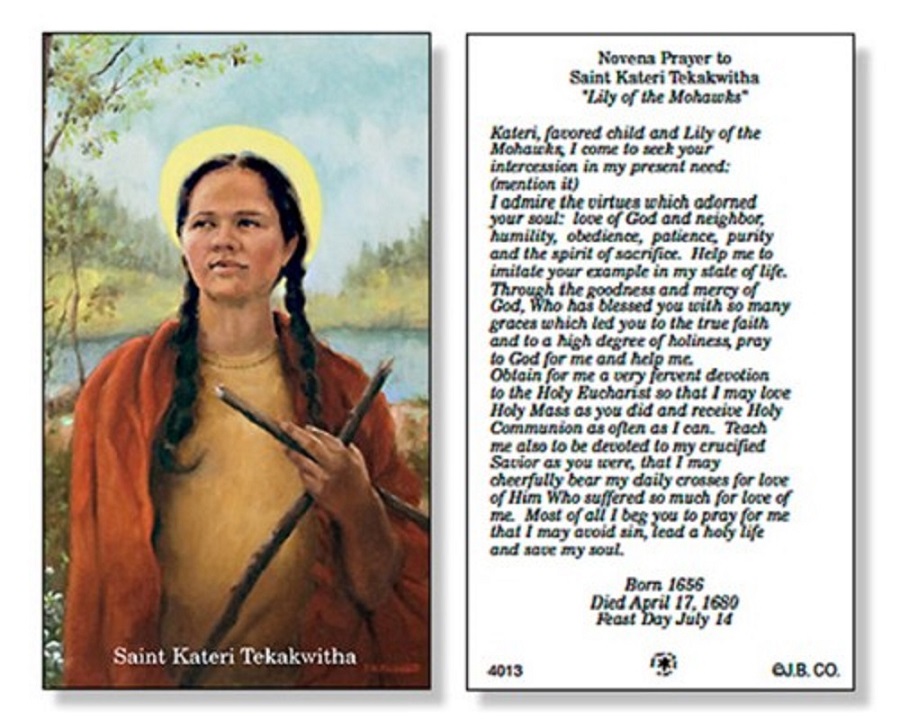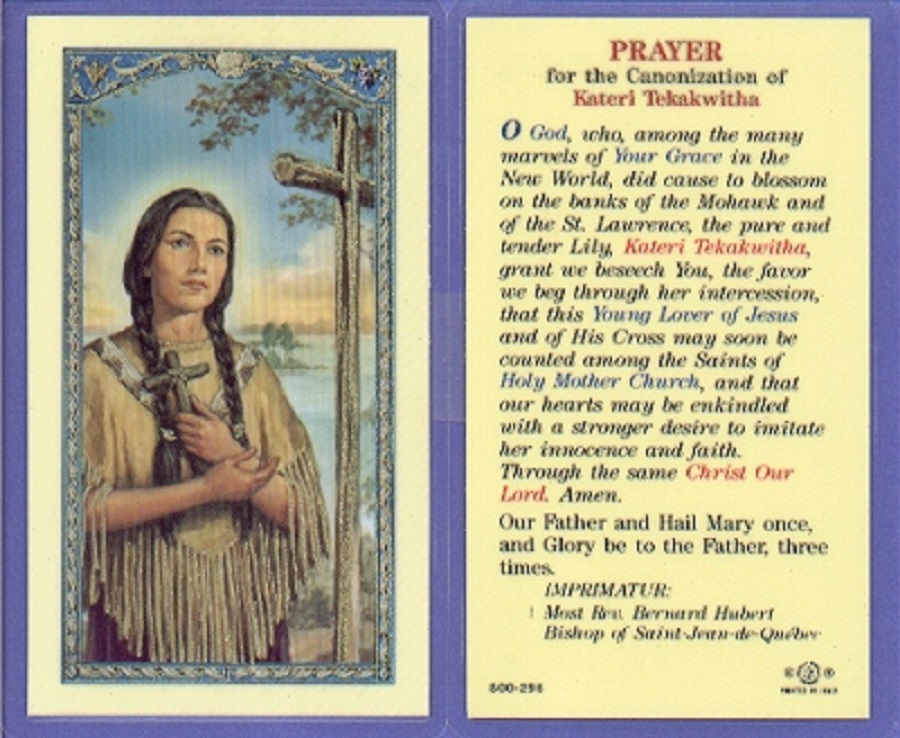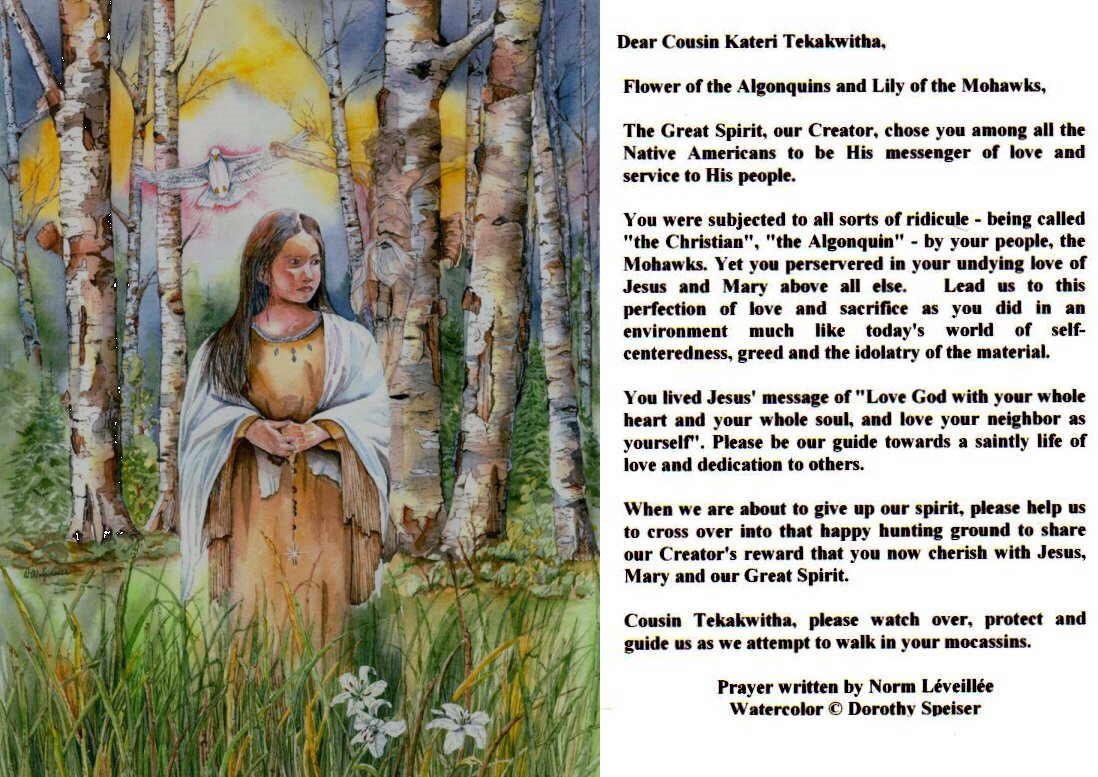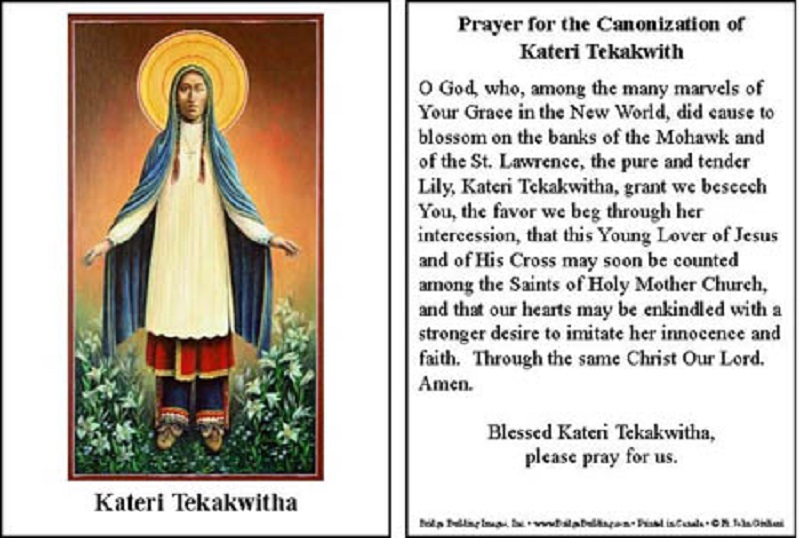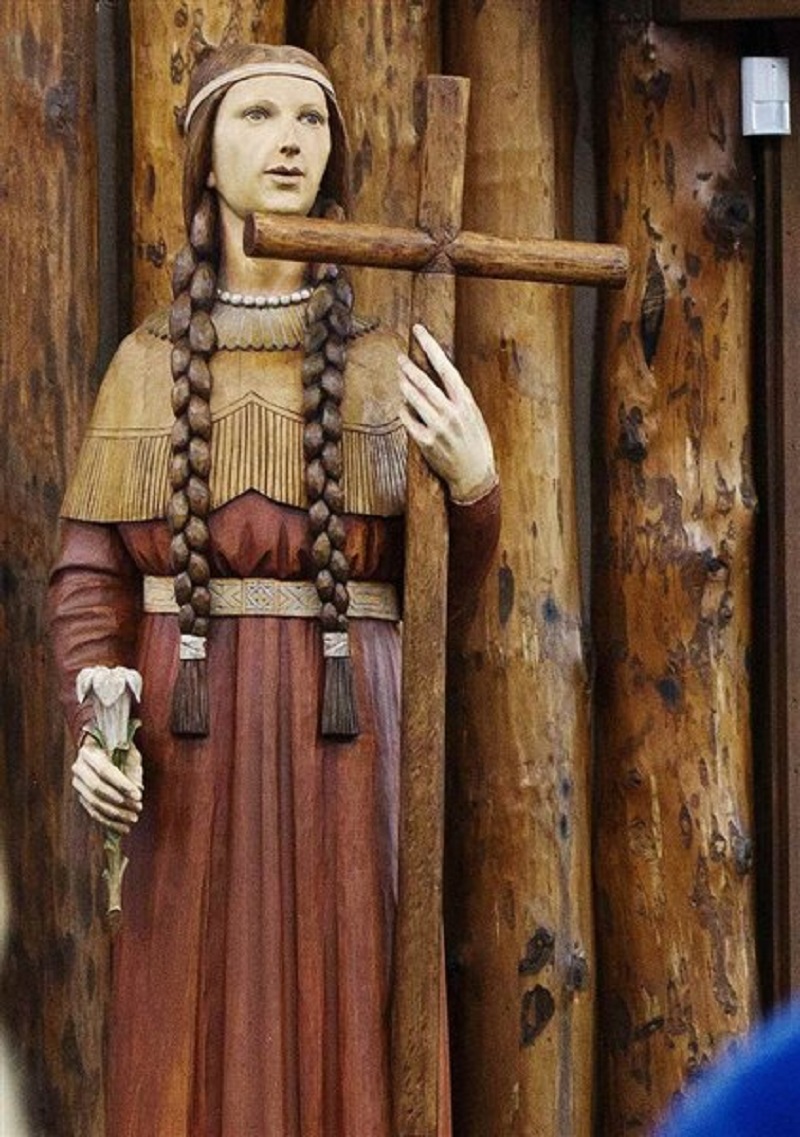Catherine Tekakwitha, also known as Kateri Tekakwitha or the "Lily of the Mohawks," was a 17th-century Mohawk-Algonquin woman who has become a prominent figure in both Native American and Catholic history. Born in 1656 in the Mohawk village of Ossernenon, near present-day Auriesville, New York, Tekakwitha led a remarkable life marked by her deep spirituality and commitment to her faith.
Early Life:
Catherine Tekakwitha was born to a Mohawk chief father and an Algonquin-Christian mother. At a young age, she faced significant hardships when a smallpox epidemic swept through her village, killing her parents and brother, and leaving her partially blind and scarred. As a result, Tekakwitha was adopted by her aunt and uncle, who were both skeptical of Christianity.
Conversion and Persecution:
In 1667, Jesuit missionaries arrived in Tekakwitha's village and began to teach the Mohawks about Christianity. Tekakwitha became increasingly interested in the faith, despite the disapproval of her community. In 1676, she was baptized by Father Jacques de Lamberville, a French Jesuit missionary, and took the Christian name Catherine (Kateri) in honor of Saint Catherine of Siena.
Following her baptism, Tekakwitha faced ostracism, threats, and harassment from her community for her newfound faith. This hostility eventually led her to flee to a Christian mission settlement in Kahnawake, near Montreal, Canada, in 1677.
Life at Kahnawake:
At Kahnawake, Tekakwitha found a community of Native American Christians led by Jesuit missionaries. Here, she dedicated herself to a life of prayer, penance, and charitable works. Tekakwitha was known for her strict asceticism, and she often wore a rough garment made from tree bark, abstained from food, and subjected herself to self-mortification as expressions of her devotion.
Tekakwitha also became an advocate for peace and reconciliation between warring tribes, and she often participated in works of charity for the sick and elderly. Despite her frail health, she was deeply committed to serving others and became a role model for her community.
Death and Legacy:
Catherine Tekakwitha died on April 17, 1680, at the age of 24, likely due to the long-term effects of smallpox and her rigorous ascetic practices. Witnesses claimed that shortly after her death, her scars disappeared, and her face appeared radiant.
The life and holiness of Catherine Tekakwitha quickly spread, and she became venerated as a saint by Native Americans and European settlers alike. In 1943, she was declared Venerable by Pope Pius XII, and in 1980, she was beatified by Pope John Paul II. Finally, on October 21, 2012, Pope Benedict XVI canonized her as Saint Kateri Tekakwitha, making her the first Native American saint recognized by the Roman Catholic Church.
Today, Saint Kateri Tekakwitha is considered a symbol of unity and a bridge between Indigenous peoples and Christianity. She is the patron saint of Native Americans, ecology, and the environment, and her life story continues to inspire people around the world.
_________________________
Saint Kateri Tekakwitha, baptised as Catherine Tekakwitha and informally known as Lily of the Mohawks (1656 – April 17, 1680), is a Roman Catholic saint, who was an Algonquin–Mohawk virgin and religious laywoman. Born in present-day New York, she survived smallpox and was orphaned as a child, then baptized as a Roman Catholic and settled for the last years of her life at the Jesuit mission village of Kahnawake, south of Montreal in New France, now Canada.
Tekakwitha professed a vow of virginity until her death at the age of 24. Known for her virtue of chastity and corporal mortification of the flesh, as well as being shunned by her tribe for her religious conversion to Catholicism. She was beatified by Blessed Pope John Paul II in 1980 and canonized by Pope Benedict XVI at Saint Peter's Basilica on October 21, 2012. Various miracles and supernatural events are attributed to her intercession.
readmore here : http://en.wikipedia.org/wiki/Kateri_Tekakwitha
